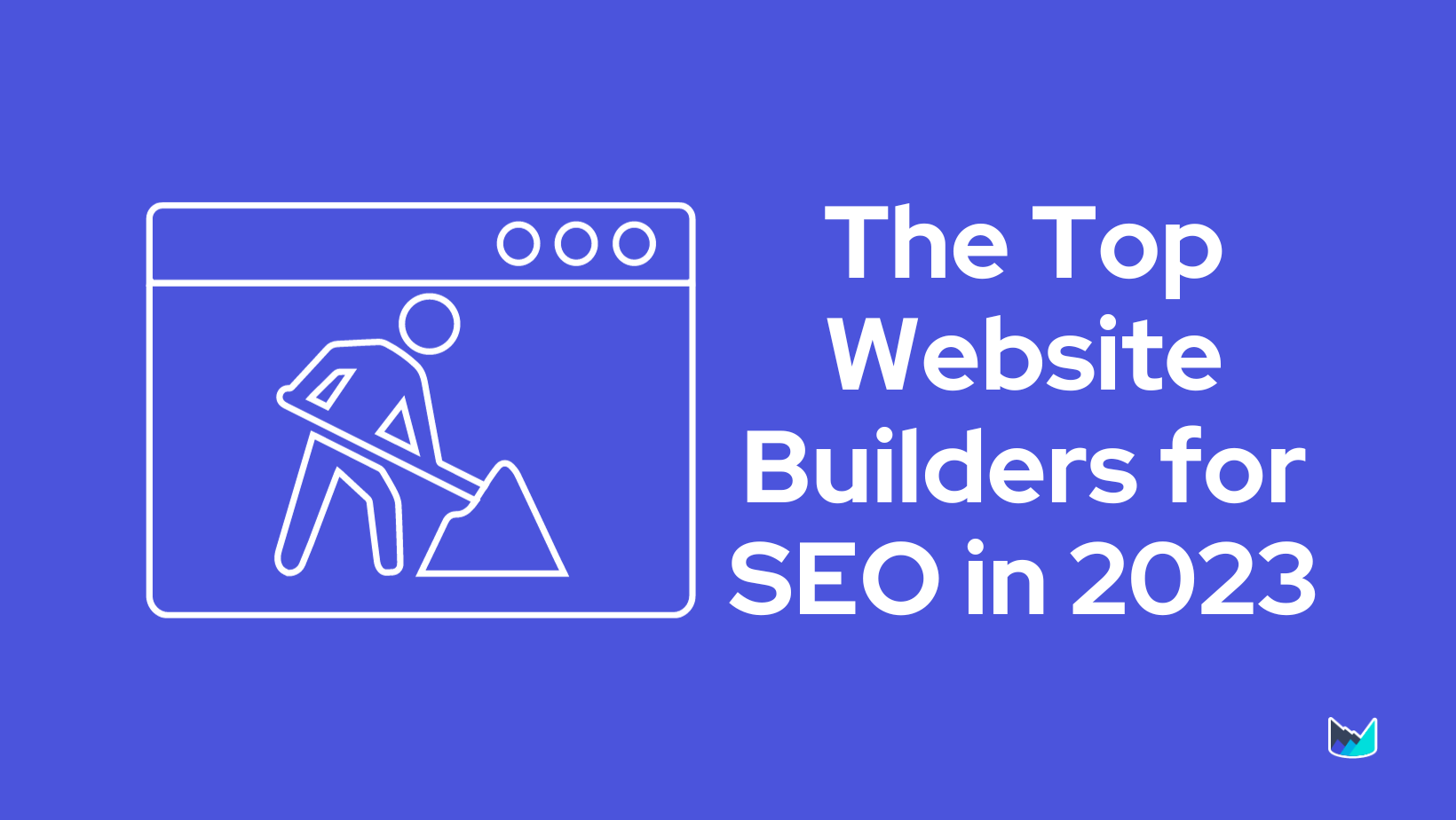- Product
- SEO Content Editor
- SEO Content Strategy
- Content Optimization
- Content Briefs
- AI Assisted Writing
- Keywords Clustering
Preview a demo walkthrough
Outranking the competition with our cutting-edge SEO strategies.
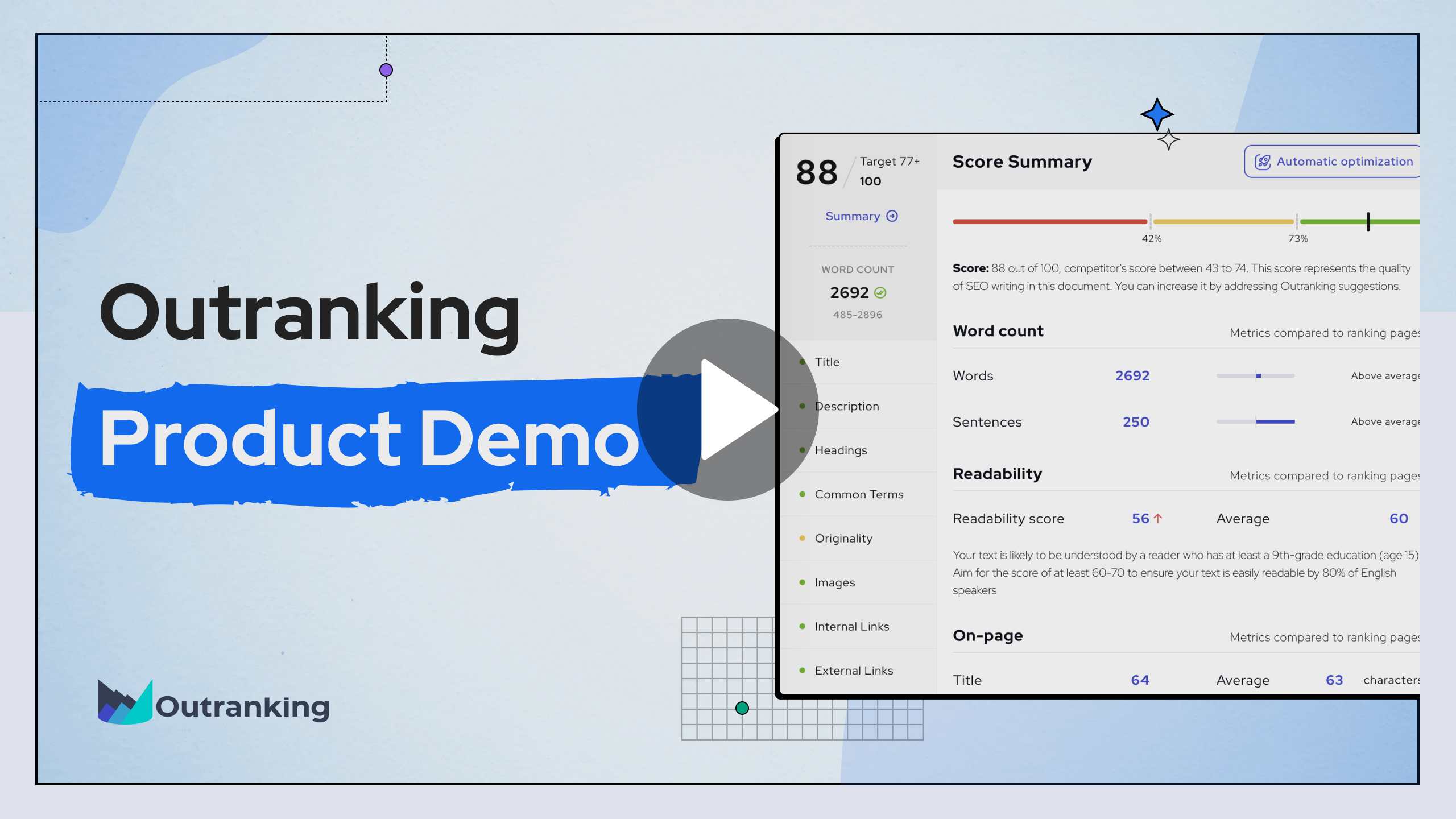
- Pricing
- Resources
- Sign In
- Get Started
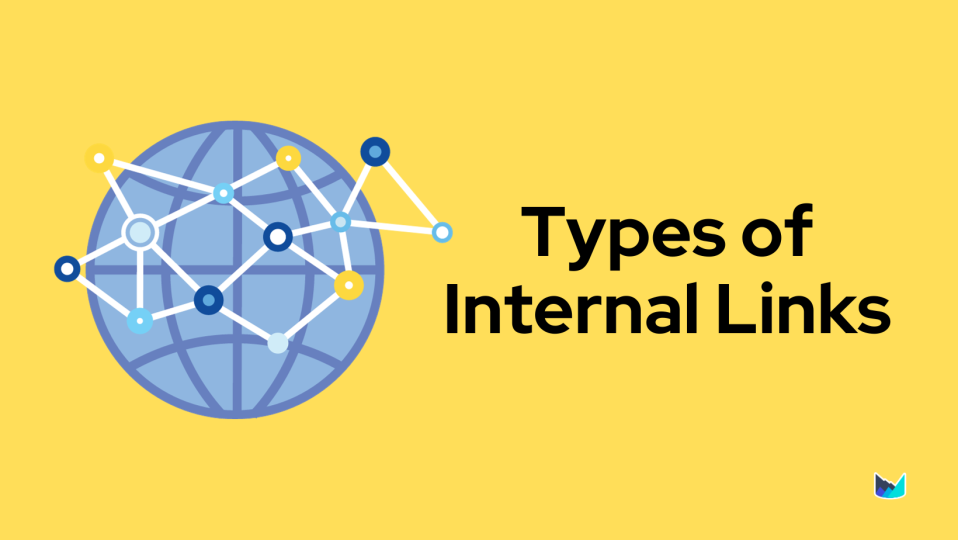
Table of Contents
The beating heart of your website? Unquestionably, internal links!
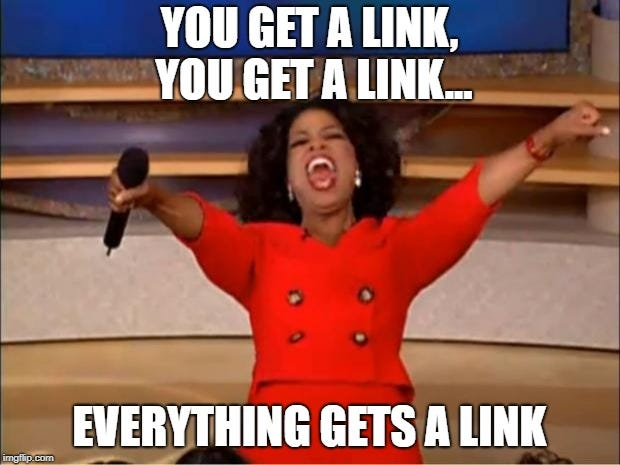
An integral part of your website content and architecture, internal links are not just random connections. Instead, they serve as hyperlinks that structure and streamline navigation. Also known as crucial pathways, internal links not only establish your website’s hierarchy and context but also pass around ‘link juice’ or link equity, boosting its overall authority. These help decipher your website and make it appear more important to search engines.
😂A fun fact: even Google’s ranking algorithm relies heavily on internal links to comprehend your website’s structure and inter-link content relevance
Listen to what John Mueller of Google’s Search Advocate says about the importance of internal links in Google’s search algorithm.
Types of Internal Links
Wait, you know there’s more than one type of internal link!
Yes, five to be precise, including sidebar links!
- Navigational links located in your headers, sidebars, and footers for easy access, guide users around your website like an online tour guide.
- Text links or anchor texts, the clickable words that take you to a hyperlink, provide comprehensive information about a specific topic. Just a click, and voila! You’re on a flight to Knowledge City!
- Contextual links are the surprise links! Often found in your blog posts, they unwrap additional resources for your readers, adding a higher link value.
- Image links can materialize as anything– buttons, charts, pictures- acting as hyperlinks leading users to a related resource.
- Lastly, there are footer links that hang out at the bottom of the page, befriending social media links, contact info, and more.
Don’t forget sidebar links, the cool kids that stay at the side of your content, always ready to assist users with extra information.
Let’s picture these different types of internal links as a digital spiderweb, woven throughout your site to help with SEO and to add value to your readers. Exciting, isn’t it?
The more the links, the better it is!
📖Long Read: Know how internal links help with on-page SEO.
Table of Contents
The Key Role of Internal Links
How Internal Links Support SEO
You see, search engines like Google have digital spiders🕷️. “Spiders? Yikes!”, you might think.
Not quite! These are beneficial search engine crawlers, constantly navigating the intricate web of your links. These eager search crawlers move methodically from link to link and page to page, enabling Google to comprehend your site structure and the relative weightage of each page.

Remember, engines have a crawl limit, and these bots halt once they reach your built-in crawl limit—it’s off to crawl another site. Nevertheless, during their journey, this ‘ web-walking’ bots effectively spread ‘link juice’ to other crawled pages, significantly surging their search rankings.
Adding more internal links to a page signals Google and its diligent search engine crawlers that ‘Hey, this content is essential!’ Hence, internal links transcend merely being functional connections; they are integral constituents of search engine optimization!
They not only assure a smooth user experience but also are navigational guides for these bots, effectively serving as your website’s SEO whisperers!
According to Ahrefs, the more internal links a page has, the higher its PageRank.
Internal Links and Site Navigation
Internal links are your website’s roadmap. They serve as the foundation of your website architecture, guiding users and search engines. Without them, your audience risks getting lost, and your content might go unnoticed!
Your crucial internal links, including navigational and footer links, provide a snapshot of your site’s layout. They are the backbone of your website’s information hierarchy and help readers to navigate through your content easily.
Moreover, contextual and image links provide users with an in-depth journey through a topic, transporting them from one piece of content to the next with ease!

Source Moz
Remember, even in the digital landscape, efficient navigation is your user’s prized treasure. Regularly examining these navigation paths with a site audit and using a comprehensive site audit tool, like Ahrefs, can be beneficial in maintaining a well-organized site.
Here’s a case study of how an eCommerce brand increased its organic traffic by 24%.
Best Practices for Internal Linking
Choosing the Right Number of Internal Links
3 to 5 links per 800 words? That’s a good start! But hold on, this isn’t a hard and fast rule.
The ‘link recipe’ changes from the destination page to the destination page! Based on page data, things like pillar pages, landing pages, and highly competitive articles are often in higher demand with more internal links pointing at them. Besides, the more critical the destination page, the more links it often garners.
Keep in mind, however, to ensure relevance and visitor value before settling on your link count. The guiding rule? Strive to strike a balance between the content length, relevance, page data, and user value when distributing your web of links. Consider each page as a unique dish, necessitating its own specific link seasoning!
Here’s a good example of optimal internal linking. Note how each section has 1-2 relevant links using contextual keywords.
Selecting Appropriate Anchor Text
Anchor text selection is an art! Think of it as a ‘paintbrush stroke’ that creates keyword-targeting links from a central piece of text to a meaningful page on your site.
What makes this artistic element good? Quality anchor text reinforced by appropriate keyword ranking!
Fancy a tip for your keyword target? Keep it brief and relevant! Phrases like “Click here” or other ambiguous expressions won’t do you any favors. Your anchor text should clearly indicate the target keywords of the page it’s instructing to. Therefore, consider it as the ‘door label’ to your pages.
Certainly, don’t forget SEO optimization tactics. Use your target keywords that mirror your destination URL to improve your understanding of Google’s algorithm. But, heed a word of caution, over-optimizing is equivalent to keyword stuffing, and Google identifies this as spam!
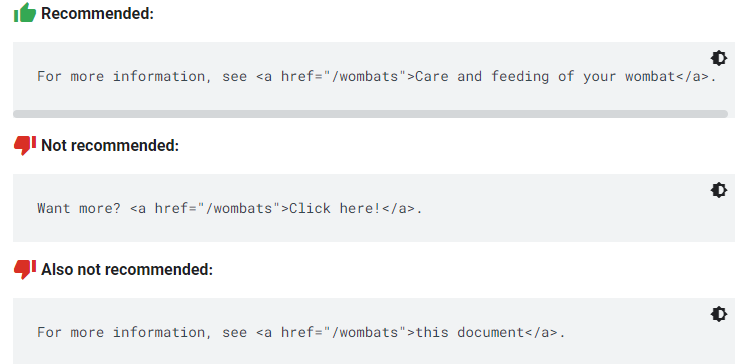
Common Mistakes in Internal Linking
Overuse and Misuse of Internal Links
Yes, “more the merrier” doesn’t apply here. When building your SEO authority, it’s important to note that Google’s John Mueller says, “Too many internal links can harm more than help!”
It sounds paradoxical, right? Let me explain.
When you cram too many internal links, you’re essentially diluting your website’s link graph. Picture a spider trying to navigate a web filled with endless intersections. Confusing, right? Google’s digital spiders share the same sentiment when they encounter an abundance of disarrayed internal links.

One common mistake? Continuously linking to your homepage and ‘Contact Us’ page from every post; it’s similar to having multiple routes leading to the same destination. Unnecessary and confusing! It is more beneficial to focus on interlinking other vital pages instead.
An essential fact to bear in mind is the nofollow attribute. Site owners often use nofollow links when referencing an external site they don’t wish to endorse with the power of a backlink.
However, be cautious not to overuse the “nofollow” tag in your own link’s HTML, as Google doesn’t index links with these tags. And remember, if a page has more than 150 links, Google won’t even attempt to crawl it. It reacts similarly to a frustrated spider and will opt to abandon the web!
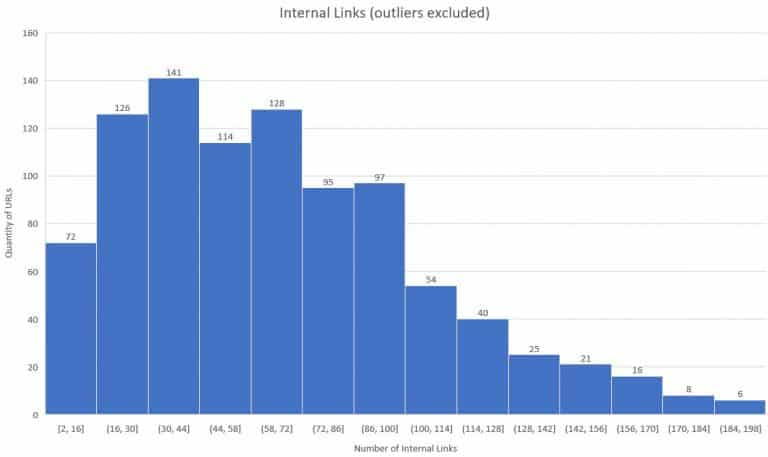
Notice what happens when your website has more than 100 links? Well, 100 is not a benchmark, but most websites that rank well on Google have less than 100.
Neglecting Content Quality in Favor of Link Quantity
Quality over quantity – probably one of the oldest sayings in the book, and guess what? It carries weight from the standpoint of internal linking too!
Piling up links without paying heed to the content’s ‘backlink quality’ and user value will only harm your SEO game. There’s no point linking an article about ‘apple pie recipe’ in a blog discussing ‘bitcoin’, right? Get it?

In the above image, you can see that the topic is “Macbook Pro” and the internal links are relevant to the topic.
That being said, don’t sacrifice the subject matter’s quality for internal linking. If you’ve got a golden nugget of content, don’t bury it under a haystack of irrelevant internal links. Instead, enrich it with contextually appropriate and high-quality backlinks. After all, it’s about guiding your readers, not boasting “Hey look, I’ve got more links!”
Internal Linking Tools
Top Internal Linking Plugins
There’s this wonder product, Link Whisper, crowned as the king of internal link plugins. Why? Because it’s smarter than your average SEO tool; it suggests, adds, and even changes anchor texts all by itself! It’s like having a personal SEO assistant for your WordPress site at your fingertips.
Here’s a top-ranking review on Link Whisper.
Can’t afford Link Whisper? Don’t fret, Internal Links Manager—another superb SEO tool—has got you covered. It’s free, straightforward, and opts for a no-nonsense approach. Perfect for bloggers who prefer simplicity, especially on their WordPress sites. With just a keyword and a URL, it automatically creates the desired internal link on your site, something akin to the genius of SEMrush.

And don’t miss out on the Internal Link Juicer. It’s like performing SEO magic on your site, squeezing the finest SEO juice out of your internal links, enhancing user experience, and bolstering your site’s SEO. Much like our offerings at SEO RANK SERP LLC.
Watch a video on Internal Link Juicer and how it integrates with WordPress.
Remember, these ingenious plugins, much like our SEO tools, can turbocharge your WordPress SEO game, but only if used smartly!
Automating Your Internal Links
Why do tedious labor when there’s a useful tool to do it for you? Allow me to introduce InLinks, your reliable internal link automation buddy, leveraging the power of data and Java!
InLinks uses a sophisticated technique known as “Natural Language Processing” to identify internal linking opportunities. Our tool skillfully assesses the data, functioning somewhat like the early crawlers, only more advanced, to avoid duplicate manual internal links. It isn’t like throwing darts in the dark.
Oh, and did I mention it comes with a ‘set-and-forget’ feature? That’s a function backed by data and Java which, once set, takes over your internal linking needs. But remember, it’s always good practice to review its work occasionally to stay aligned with your SEO strategy.
A real estate website increased its daily organic traffic from 30 to 702 within four months after it started using InLinks.
Case Studies on Effective Internal Links
Successful Internal Linking Strategy Examples
Isn’t it inspiring to learn from the masters? Let me share with you some successful examples of internal linking which not only makes a website user-friendly but also increases web traffic wonderfully.
First in line, we have Wikipedia. This website, which is synonymous with knowledge, is also a genie at internal linking. Have you ever pondered on your journey from ‘Einstein’s theory of relativity’ to ‘history of pasta’ on their platform? That’s their special recipe: comprehensive and contextually relevant internal links! This technique draws immense web traffic, keeping the users engaged and coming back for more.
Long read: Learn how Wikipedia leveraged internal linking.
Next, our spotlight falls on Amazon. Notice their “Customers who bought this also bought…” section? That, my friends, is strategic internal linking in action! It’s not merely about selling an item; they’ve mastered the art of weaving an intricate web of products, enticing you with a “Hey, I might need that!” This unique approach promotes significant web traffic and user engagement.
Remember, these giants deploy internal links not just to enhance user experience, but also to attract web traffic and boost user engagement. As the saying goes, success leaves clues. Hence, start weaving your own website’s success story!
Case Study: The Impact of Internal Links on SEO Performance
Time for a solid example. Ever heard of the e-commerce giant, Zalando? In 2018, they ran a revealing site audit on their website, further demonstrating the potential of strategic internal linking.
They added internal links to 3,300 of their shoe product pages, all pointing to a hub page. And, just like magic, the hub page’s visibility increased by a staggering 3500%! Incredible, isn’t it?
The uptick didn’t halt there. Tracked meticulously by their site audit tool, the product pages with the added internal links saw a visibility surge of nearly 600%! Now, that’s the tangible impact of smart internal linking reflected in a site audit report.
Remember, the keys here were relevance (shoe pages linking to a shoe hub page), and being strategic (targeting a hub page rather than all their pages).
So, internal links don’t just improve navigation. As this e-commerce site audit example showcases, they can yield astounding results when used strategically!

Put all these suggestions into practice and start ranking on search engines for your keywords. Remember, your goal is also to provide factual and meaningful information to your readers to help them understand a concept or offering. Ensure your links reflect this goal too.
FAQs about Internal Linking
What is the optimal number of internal links per page?
Ah, the million-dollar question! How many internal links per page, you ask? Well, there’s no universal answer. However, bearing in mind the PageRank metric and the SEO authority of your page, a good rule of thumb would be to aim for roughly 5-10 links for a 2000-word blog post. Sounds good?
But remember, the ‘golden number’ could fluctuate based on the depth of your content. A resource-heavy page swarming with SEO-relevant materials tends to have more links, while a 500-word blog post might have fewer for a minimum disturbance. The key here lies in strategic planning- ensure each link adds significant value.
Balance content length, relevance, SEO authority, and user value when selecting the number of links. Don’t just sprinkle them akin to confetti in a parade! Embody the smart chef, always measure with PageRank metric insight before you pour out the links!

What should be the anchor text for internal links?
Which words should be the anchor text? Good question, let’s delve into this together. Your anchor text should be informative and relevant, providing a sense of what the linked page is about. So instead of vague labels like ‘Click here,’ choose phrases for keyword targeting that encapsulate what your users will discover on the next page, like ‘history of chocolate.’ That sure sounds appetizing, doesn’t it?
Additionally, don’t stuff your anchor text with keywords as if it’s a keyword target; Google could penalize you for this. Always aim for a natural flow. Remember, content is written for human readers, and its benefits in keyword ranking are secondary.
Though, yes, it’s beneficial to include important target keywords, but moderation is key. Don’t overdo it!


